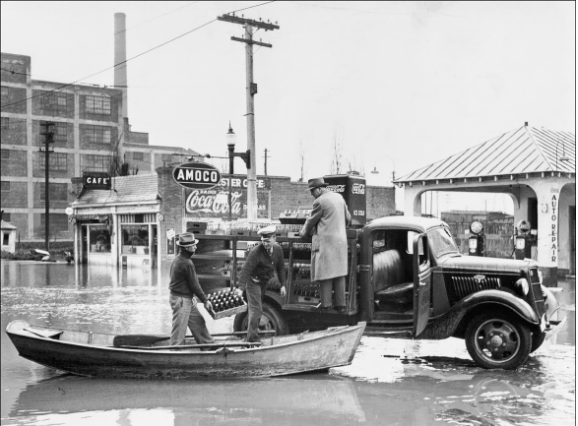At the beginning of the 1900s, leisure travel in general was something experienced exclusively by the wealthy and elite population.
In the early-to-mid-20th century, trains were steadily a popular way to get around. Through these vintage photos, we can see what train travel looked like in the good old days with the lavish furnishings and fine dining that holds a special place in the railroad’s rich history.
The 1920s and 1930s were a kind of golden age for rail travel in the U.S. and Europe, a period when railroads were portrayed as modern amenities that carried passengers to romantic getaways in luxury and comfort.
This was also a decade of prosperity and economic growth, and the first time middle-class families could afford one of the most crucial travel luxuries: a car.
Automobiles reduced demand for short-haul rail service because people could easily drive from one town to the next, but the unpaved surfaces of most roads and the uncertainty of amenities like gas stations and wayside restaurants made train travel for long distances the more convenient and preferred method of transportation.
Making long-distance rail travel comfortable required a growing number of porters and staff who catered to passengers’ every whim.
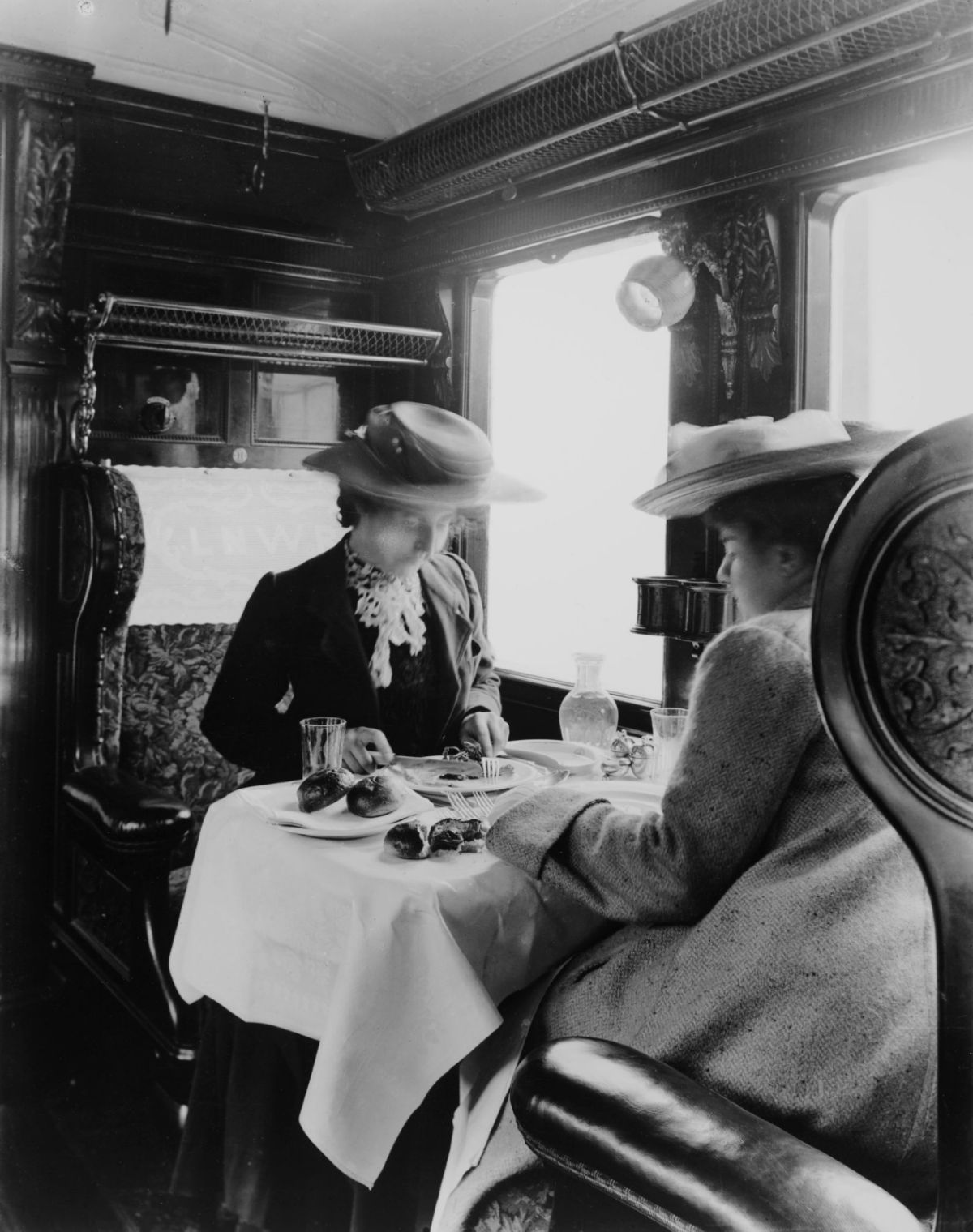
Two female passengers eating a meal in a London & North Western Railway dining car, 1905.
During the same decades, American railroads like New York Central embarked on new advertising campaigns to confront the growing threat from automobiles.
Posters, calendars, and magazine advertisements presented images that romanticized train travel, their destinations, and the sleek, new streamlined locomotives that moved passengers.
New York Central hired Industrial designer Henry Dreyfuss, who redesigned not only their locomotives and passenger cars but nearly everything the passenger may encounter from tableware to matchbooks.
Train travel made another humongous leap forward in 1930 when it debuted as the first passenger cars fully equipped with air conditioning.
The B&O Railroad debuted the first passenger train with AC on April 28, 1930, when the Martha Washington model dining car was unveiled in Baltimore. It was a sensation that The Baltimore Sun said turned train travel into a “resort on wheels.”
As the 1930s chugged along, train companies found themselves being forced to push the envelope, even more, when it came to the amenities they offered on their routes.
That meant major upgrades in areas like dining cars, which were the social hubs for all train rides, and no one did dining cars better than the B&O Railroad Company.
The Royal Blue line was the flagship train for B&O and was known for having the best of the best dining cars for its route between New York City and Washington, D.C.
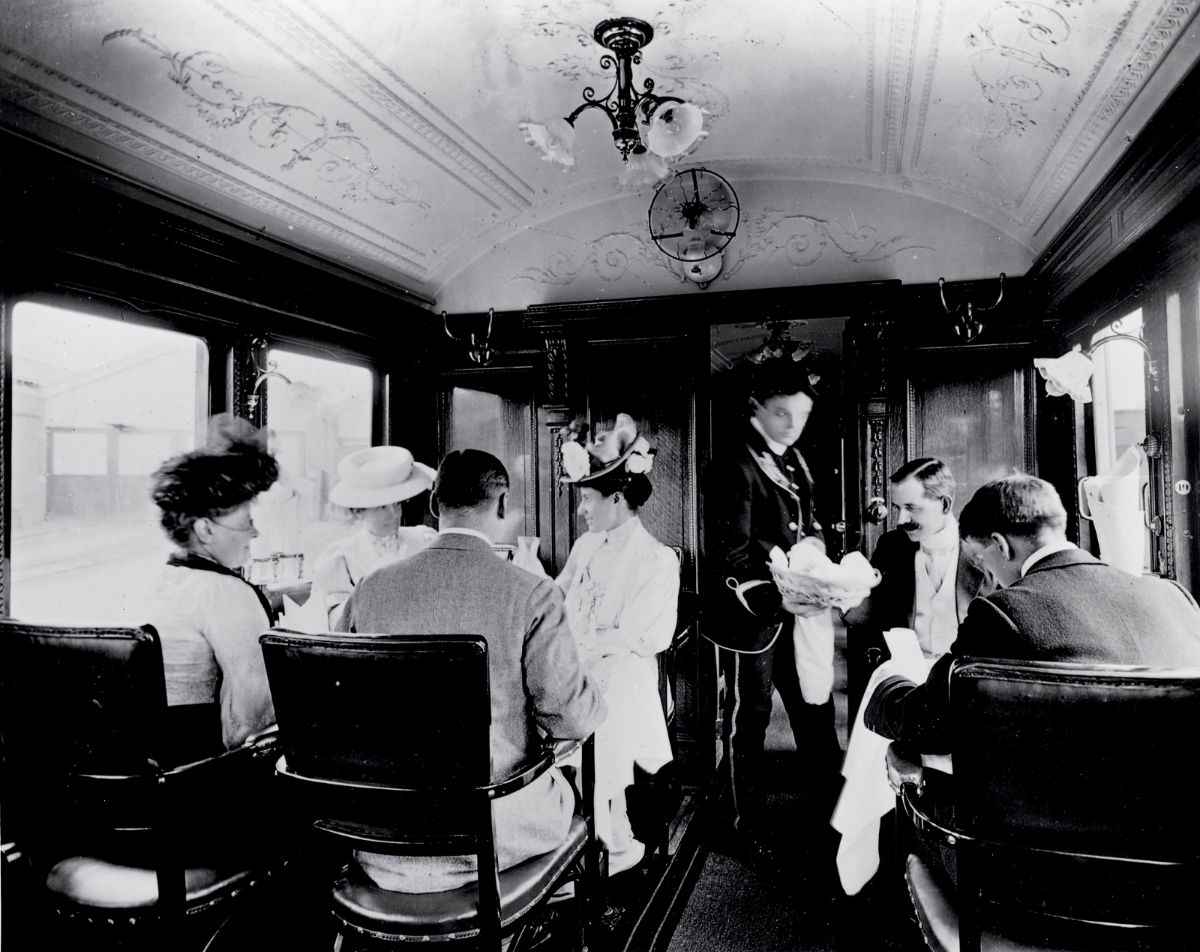
LNWR dining car on an American boat train, 1908.
Railroads played a large role in the development of the United States from the industrial revolution in the Northeast (1810–1850) to the settlement of the West (1850–1890).
The American railroad mania began with the founding of the first passenger and freight line in the nation of the Baltimore and Ohio Railroad in 1827 and the “Laying of the First Stone” ceremonies and the beginning of its long construction heading westward over the obstacles of the Appalachian Mountains eastern chain the following year of 1828.
It flourished with continuous railway building projects for the next 45 years until the financial Panic of 1873 followed by a major economic depression bankrupted many companies and temporarily stymied and ended growth.
Although the antebellum South started early to build railways, it concentrated on short lines linking cotton regions to oceanic or river ports, and the absence of an interconnected network was a major handicap during the Civil War (1861–1865).
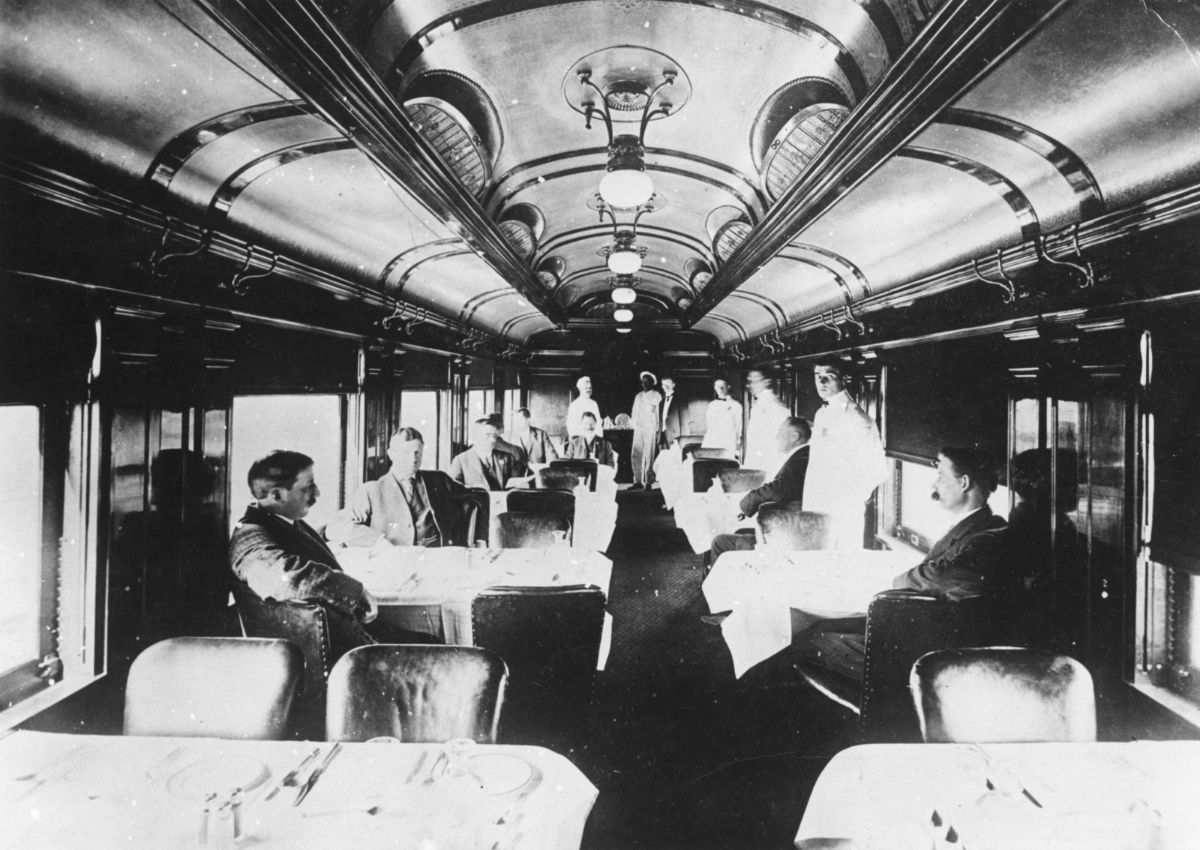
Interior of a luxury dining car, 1910.
The North and Midwest constructed networks that linked every city by 1860 before the war. In the heavily settled Midwestern Corn Belt, over 80 percent of farms were within 5 miles (8 km) of a railway, facilitating the shipment of grain, hogs, and cattle to national and international markets.
A large number of short lines were built, but due to a fast developing financial system based on Wall Street and oriented to railway bonds, the majority were consolidated into 20 trunk lines by 1890. State and local governments often subsidized lines, but rarely owned them.
The system was largely built by 1910, but then trucks arrived to eat away the freight traffic, and automobiles (and later airplanes) to devour the passenger traffic.
After 1940, the use of diesel electric locomotives made for much more efficient operations that needed fewer workers on the road and in repair shops.
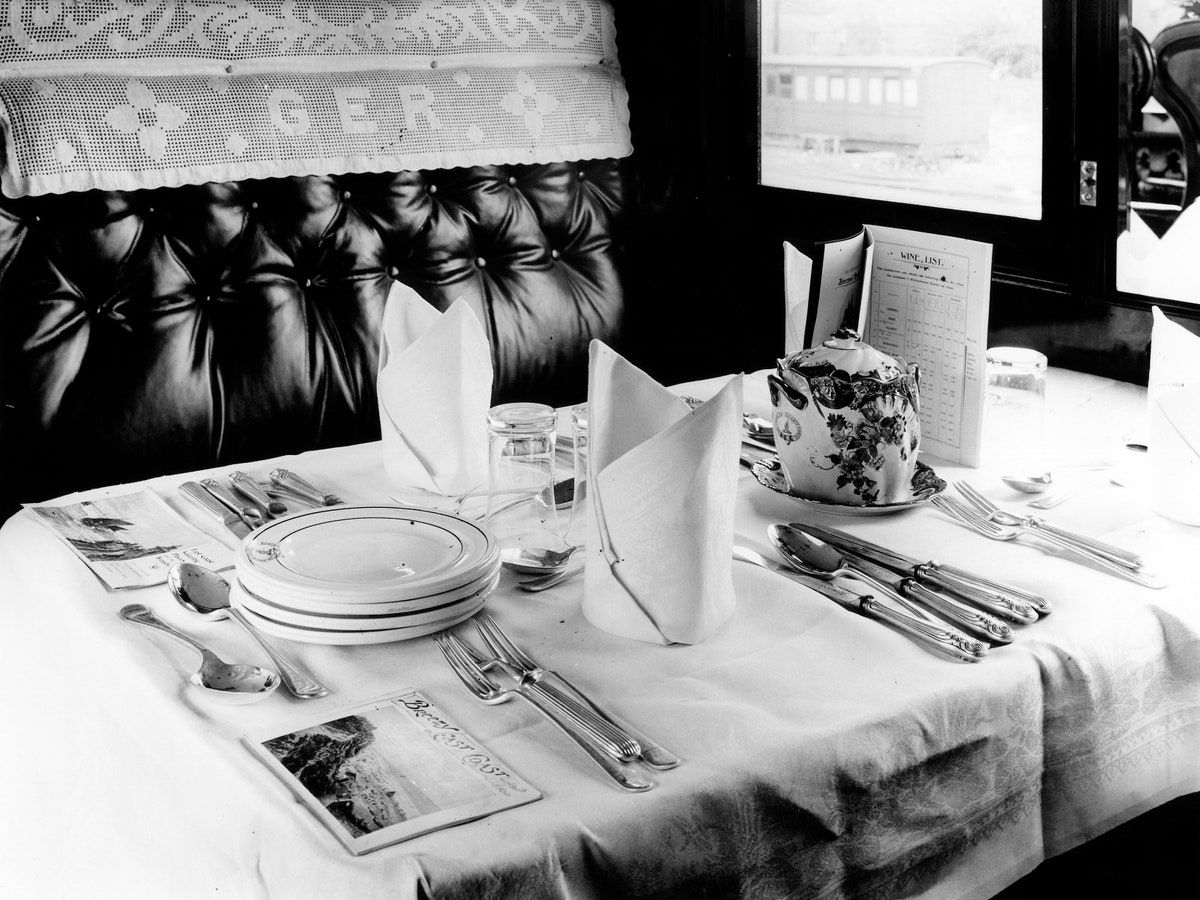
A first-class dining car on the Britain’s Great Eastern Railway—also known as GER, as shown on the embroidered seat cover, 1912.
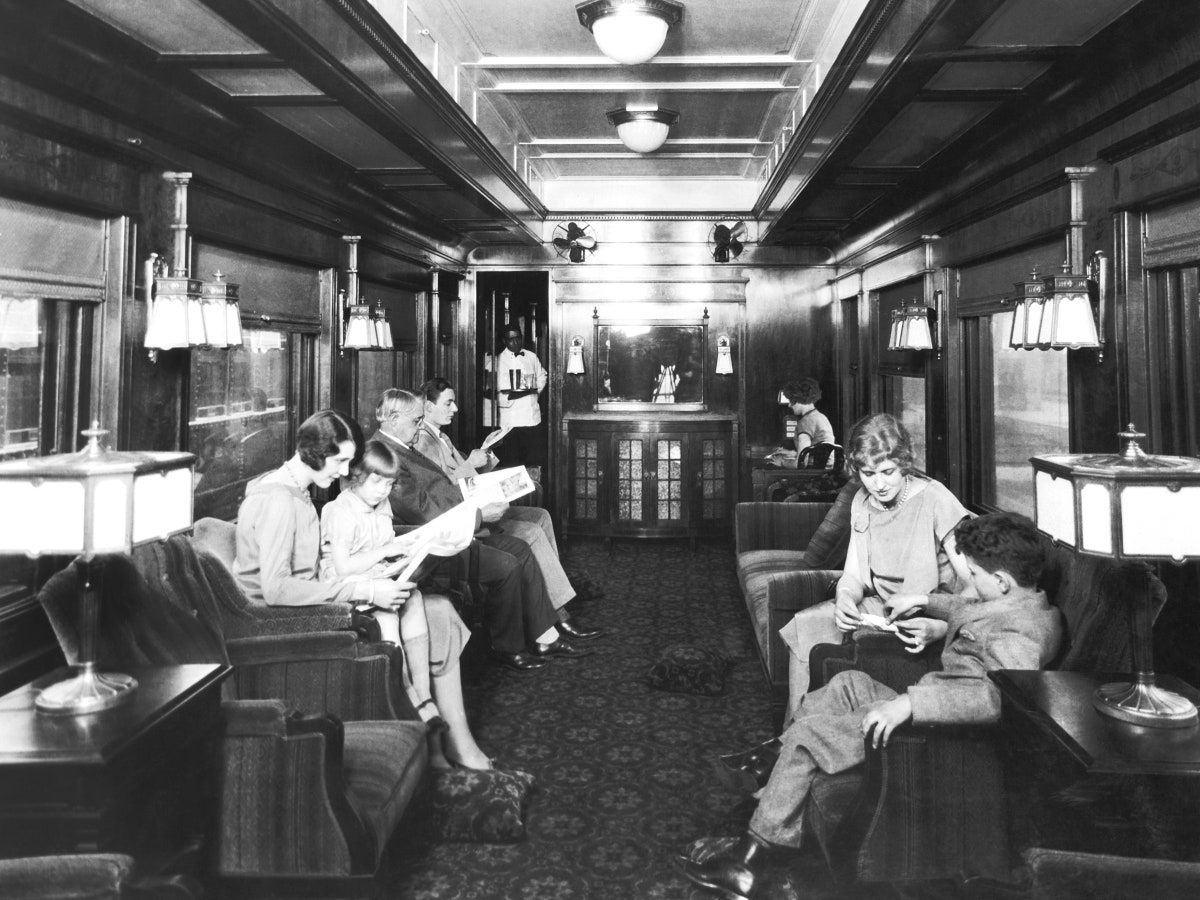
The observation and lounge car on Northern Pacific’s transcontinental U.S. railroad line, 1926.
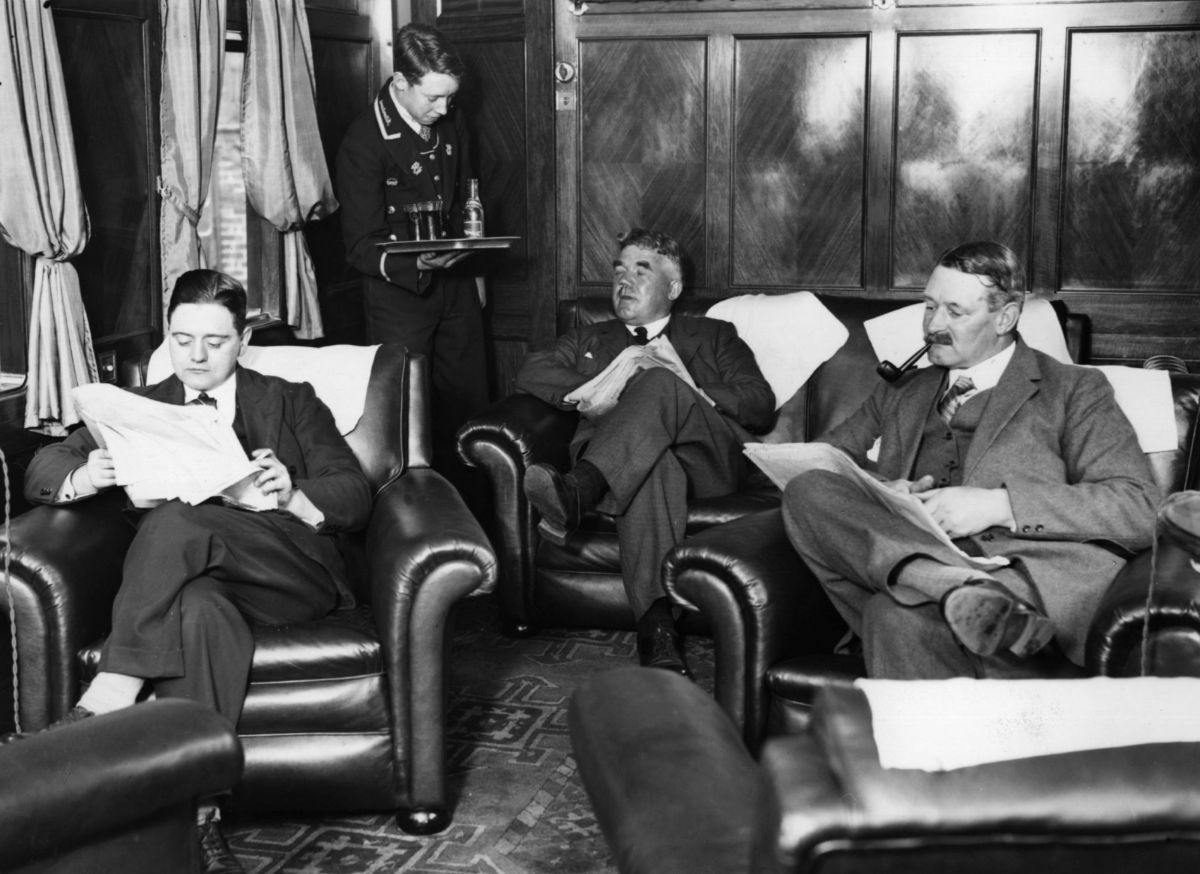
Gentlemen relax in leather armchairs on the Royal Scot, a train on the London, Midland and Scottish Railway, 1928.
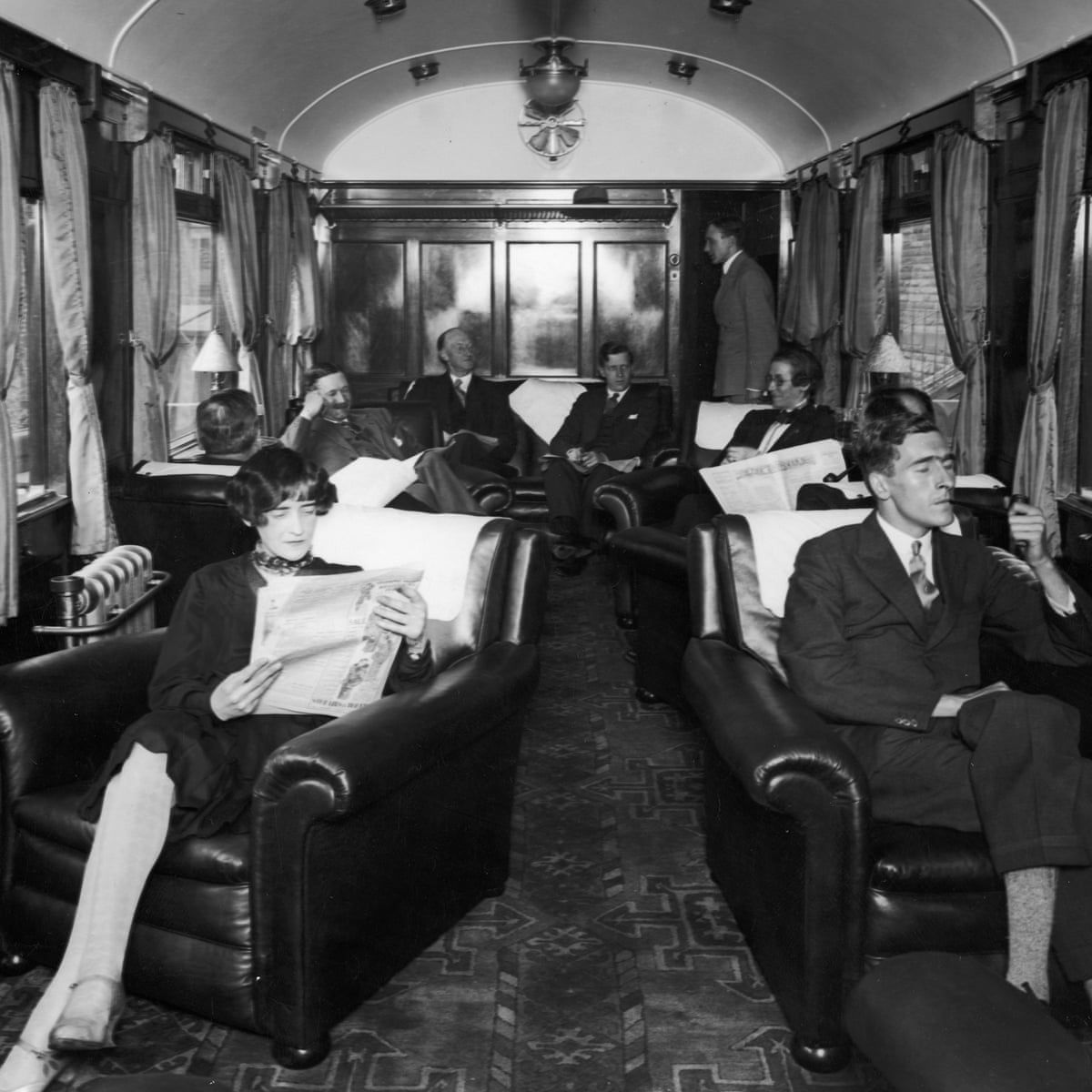
The luxurious first class lounge on board a London Midland and Scottish Royal Scot train, 1928.
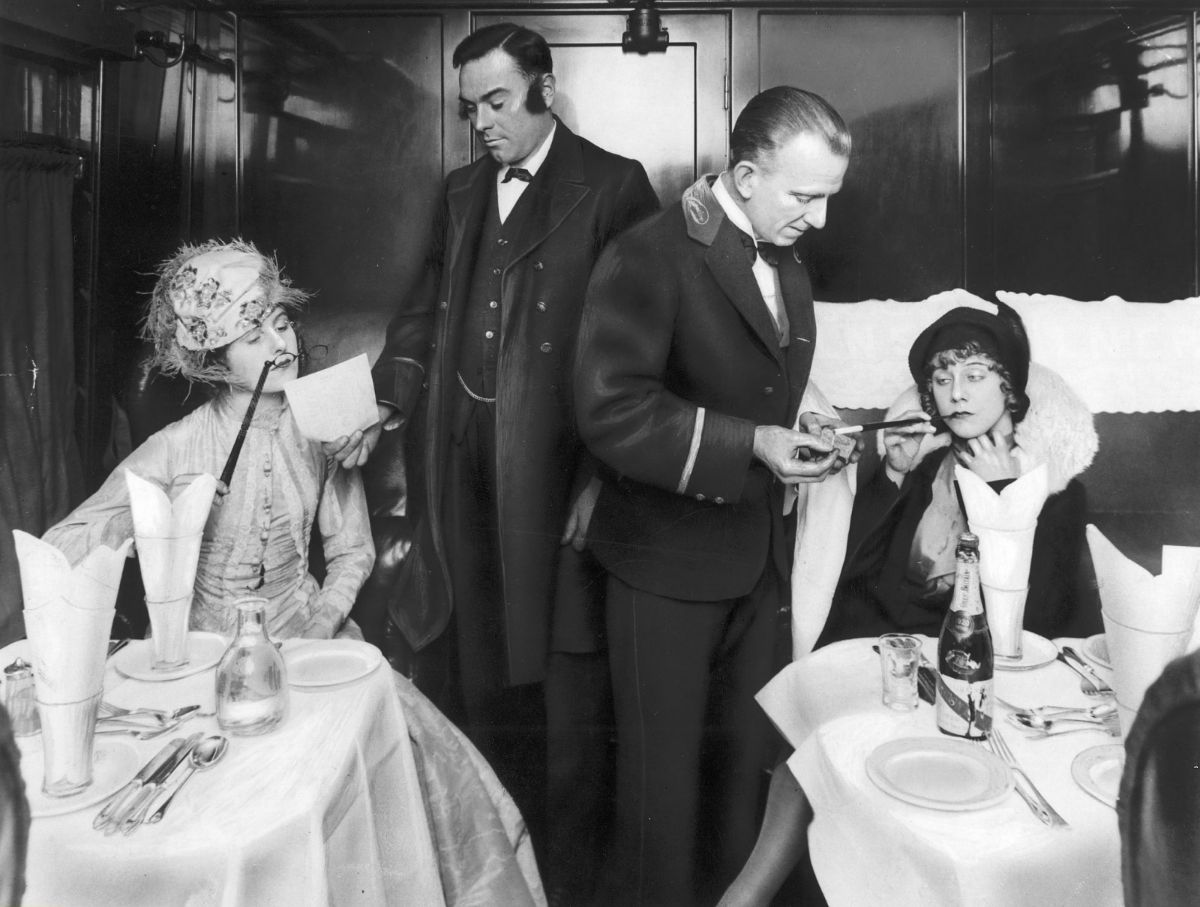
Two elegant ladies and waiters in a train dining car, Germany, 1929.
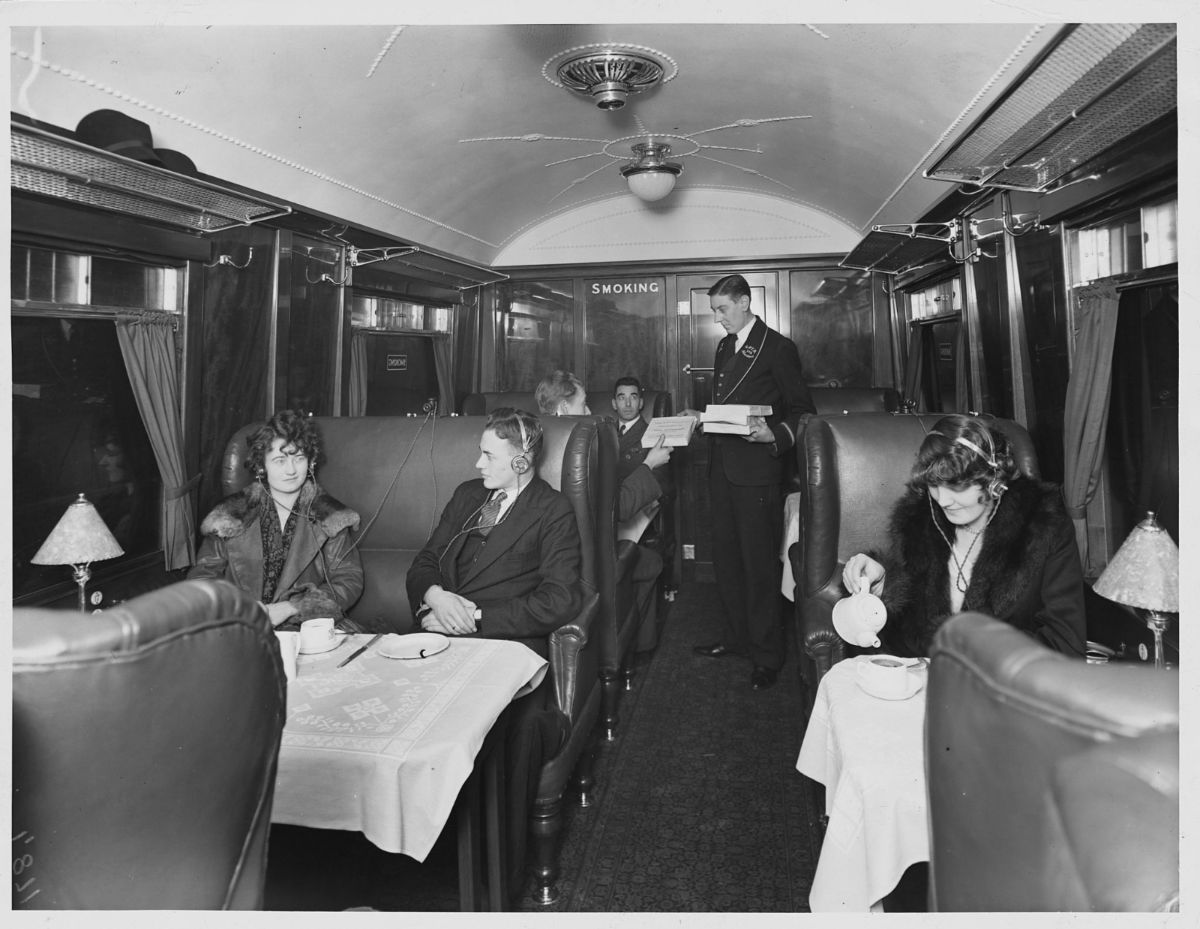
Rail passengers listening to the radio through personal headphones in the dining car of a train, 1930.
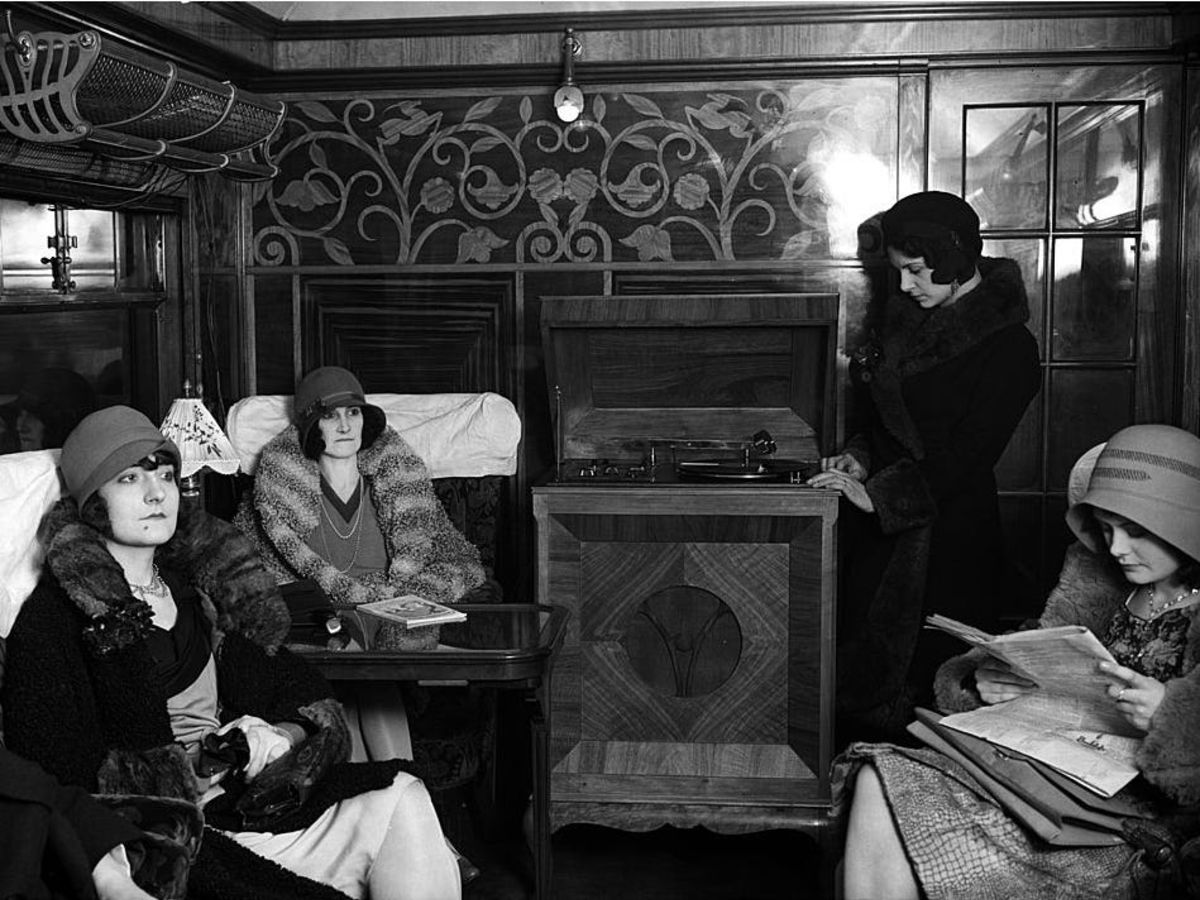
Passengers listen to a radio gramophone on a LNER train carriage in 1930.
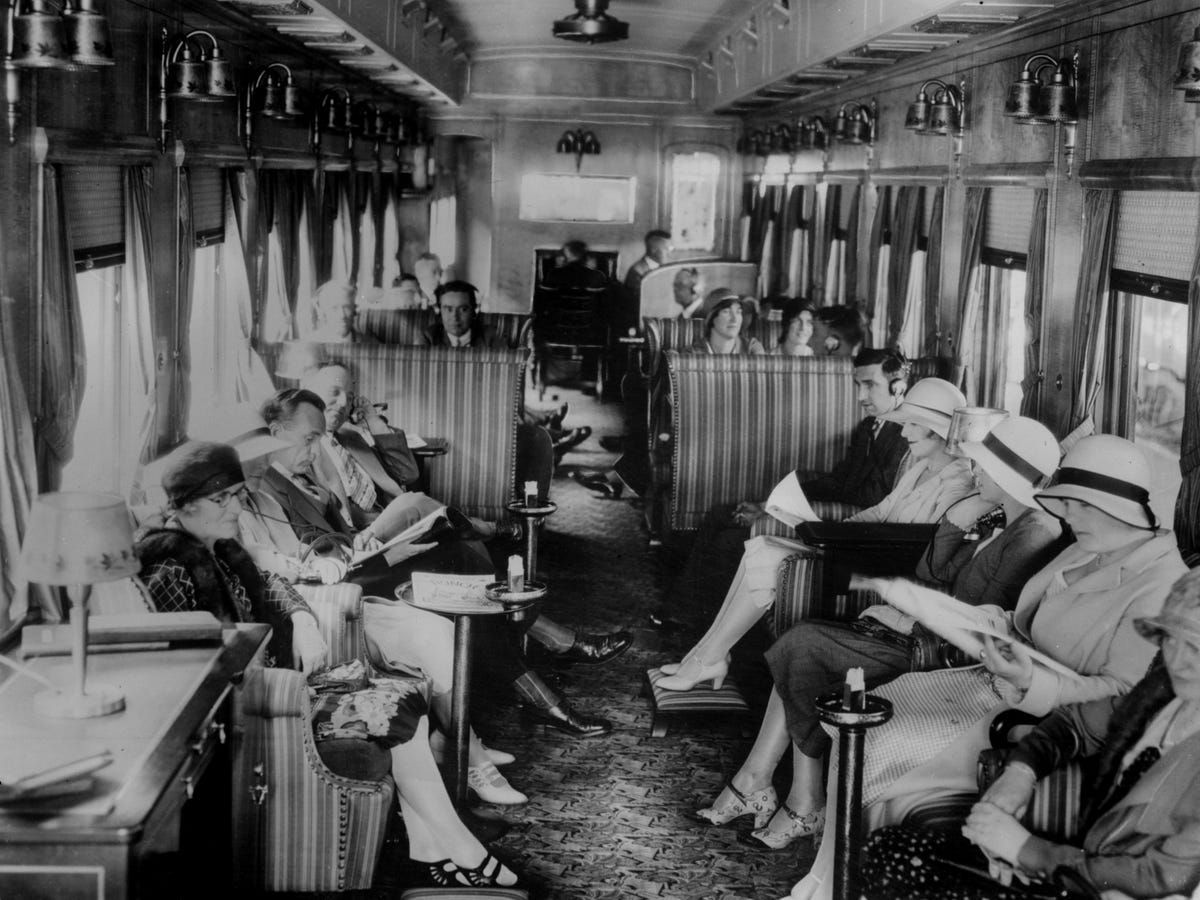
Passengers listen to the wireless on board a train on the Canadian Pacific Railway, September 1930.
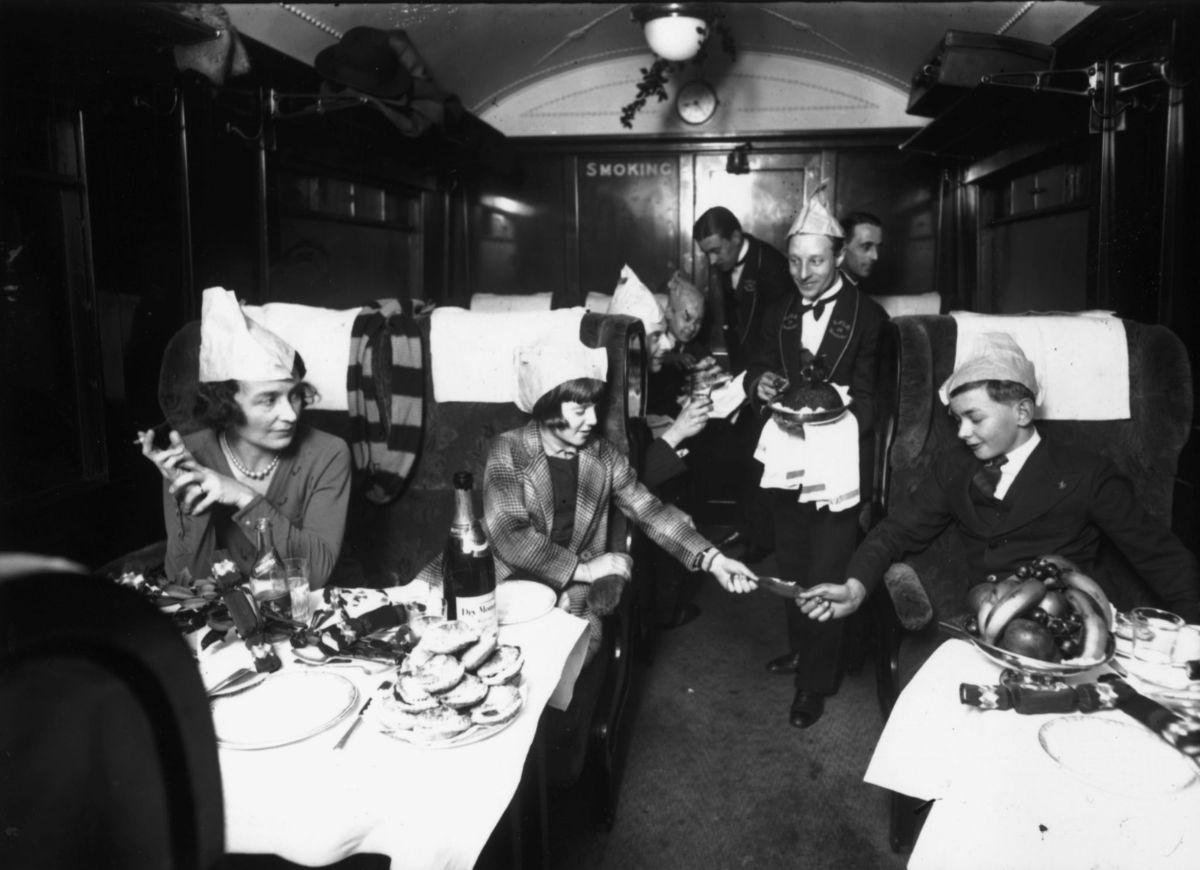
Family enjoying Christmas dinner in the Flying Scotsman restaurant car, 1931.
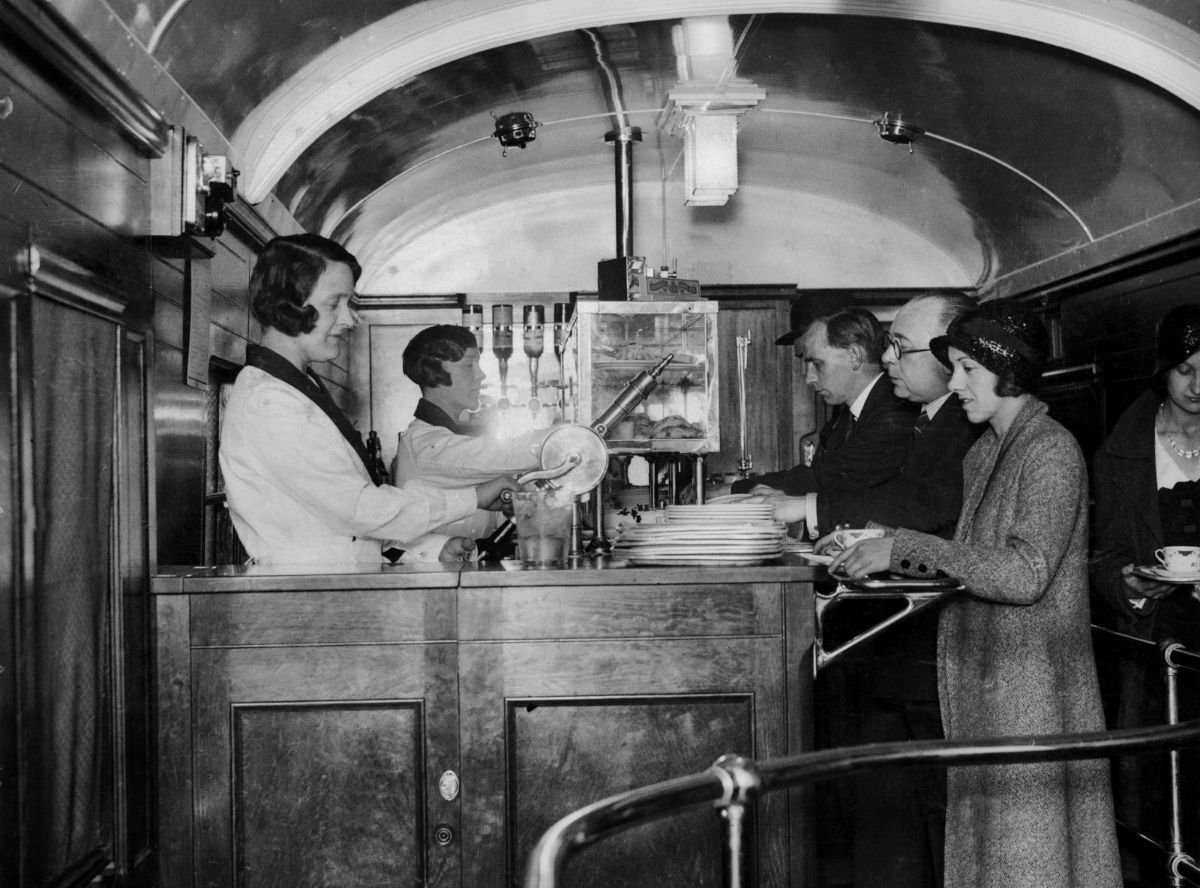
Midland And Scottish Railway train restaurant, 1932.

Passengers have lunch on North Coast Limited’s restaurant car, 1934.
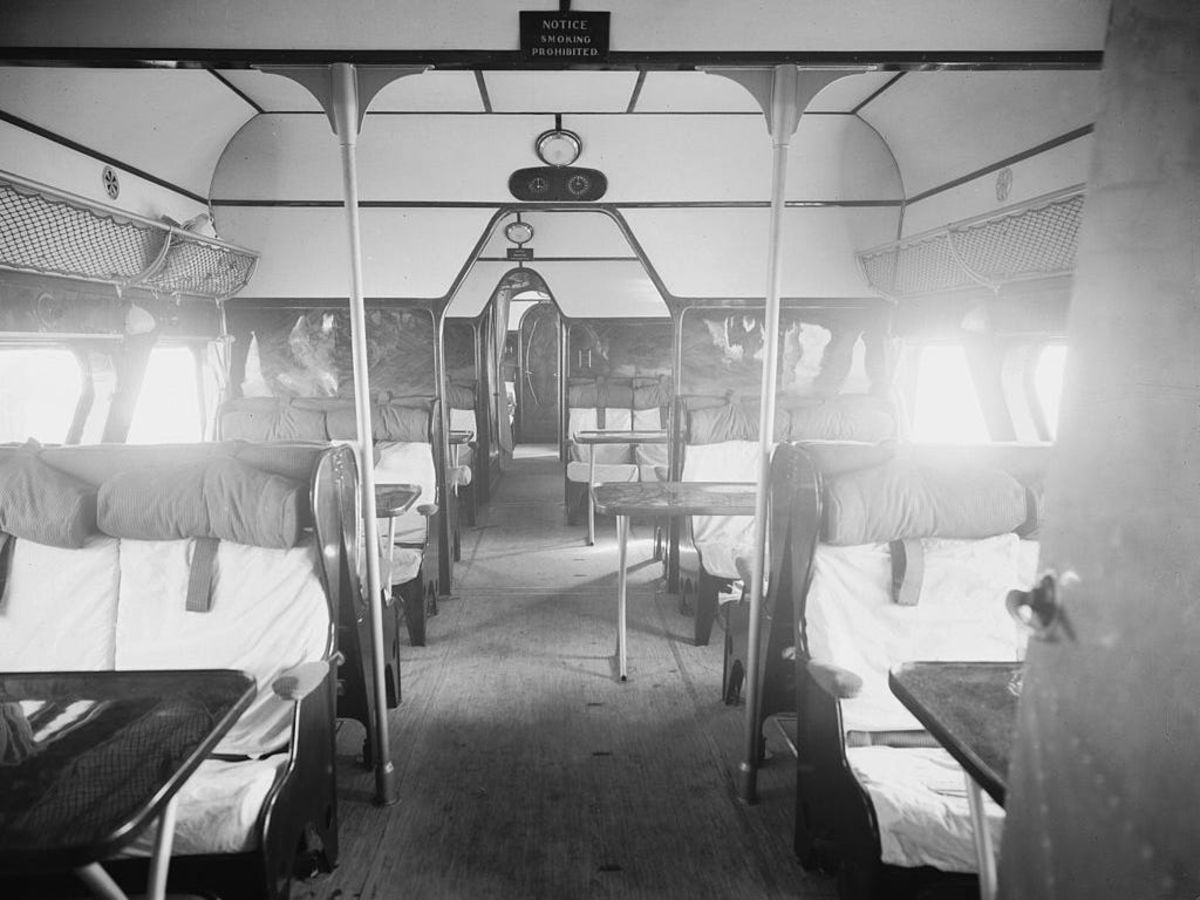
The interior of a carriage, circa 1934.
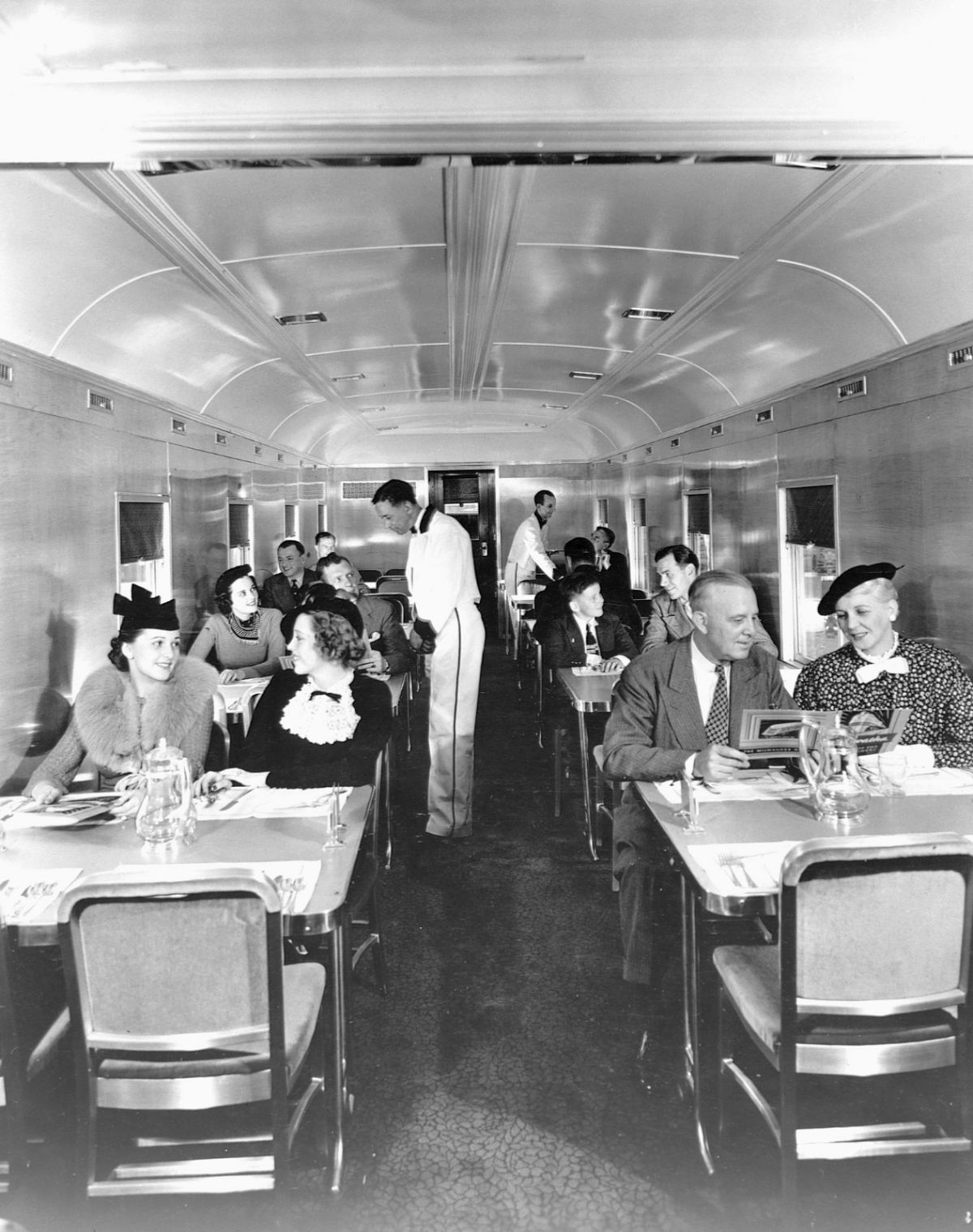
The dining car on the Chicago, Milwaukee, St. Paul and Pacific Railway Company’s Hiawatha line, which at the time of its debut was boasted as being “the largest single unit of any dining car in service,” 1935.

“Mitropa” dining-car, Germany, 1935.
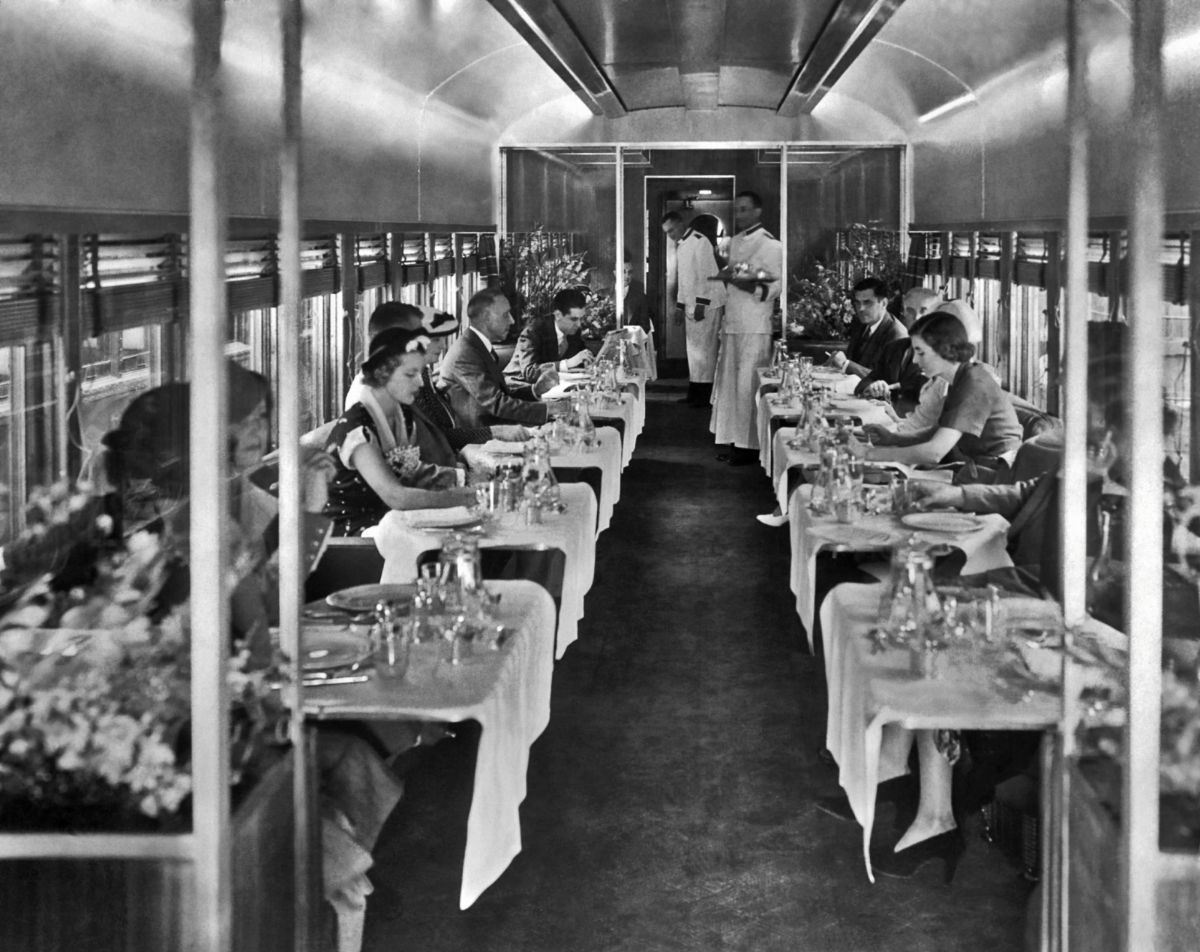
Passengers dine in the Art Deco-style car of the New York Central Railroad’s Mercury train, 1936.

Passengers in a first-class railway carriage smoking compartment, 1936.

Children enjoying a festive party in an LMS dining car while traveling home for Christmas, 1938.
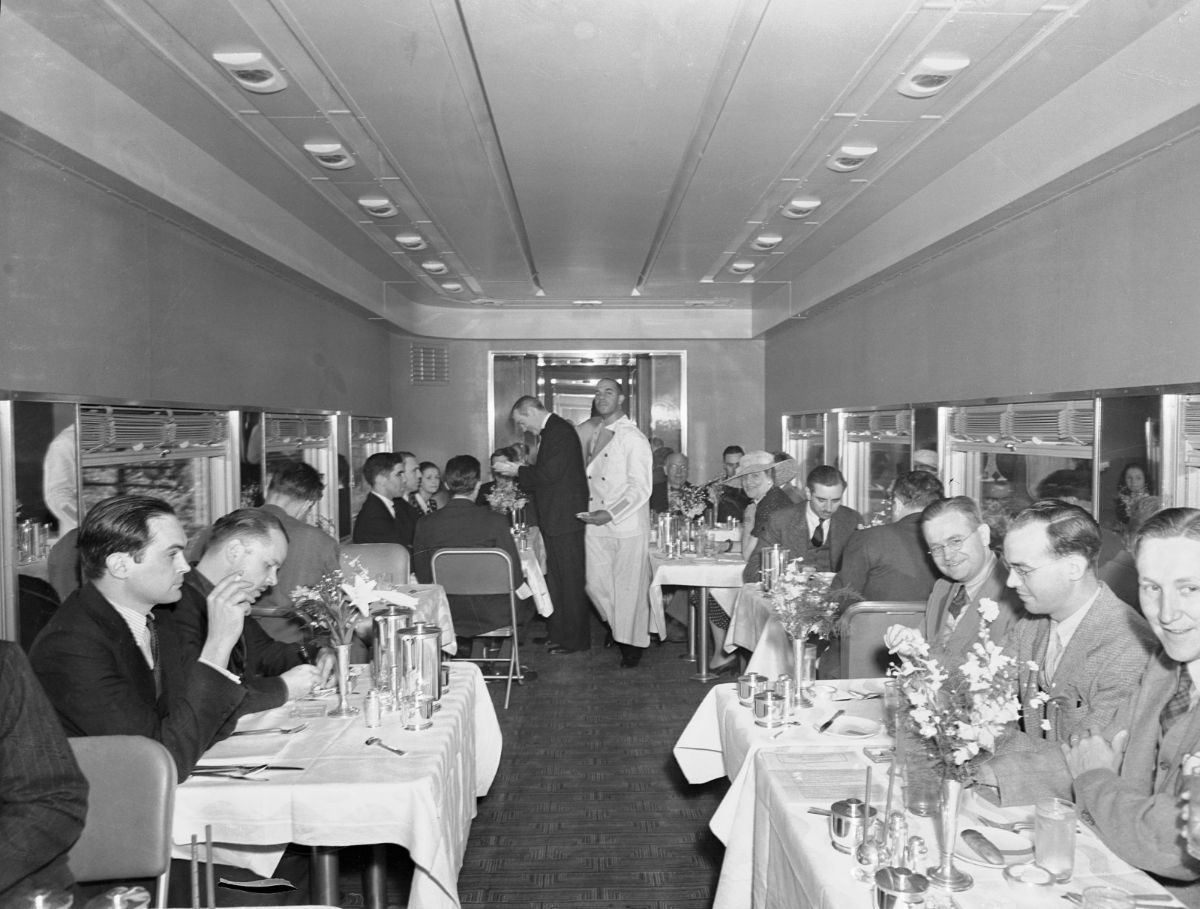
The luxurious and spacious dining of the new, streamlines Twentieth Century Limited, crack New York Central Railroad flyer showing the passengers at their meals during the “preview” run to New York City, 1938. The new train, first all-room train in America, will go into service between New York City and Chicago June 15th, on a 16-hour schedule.
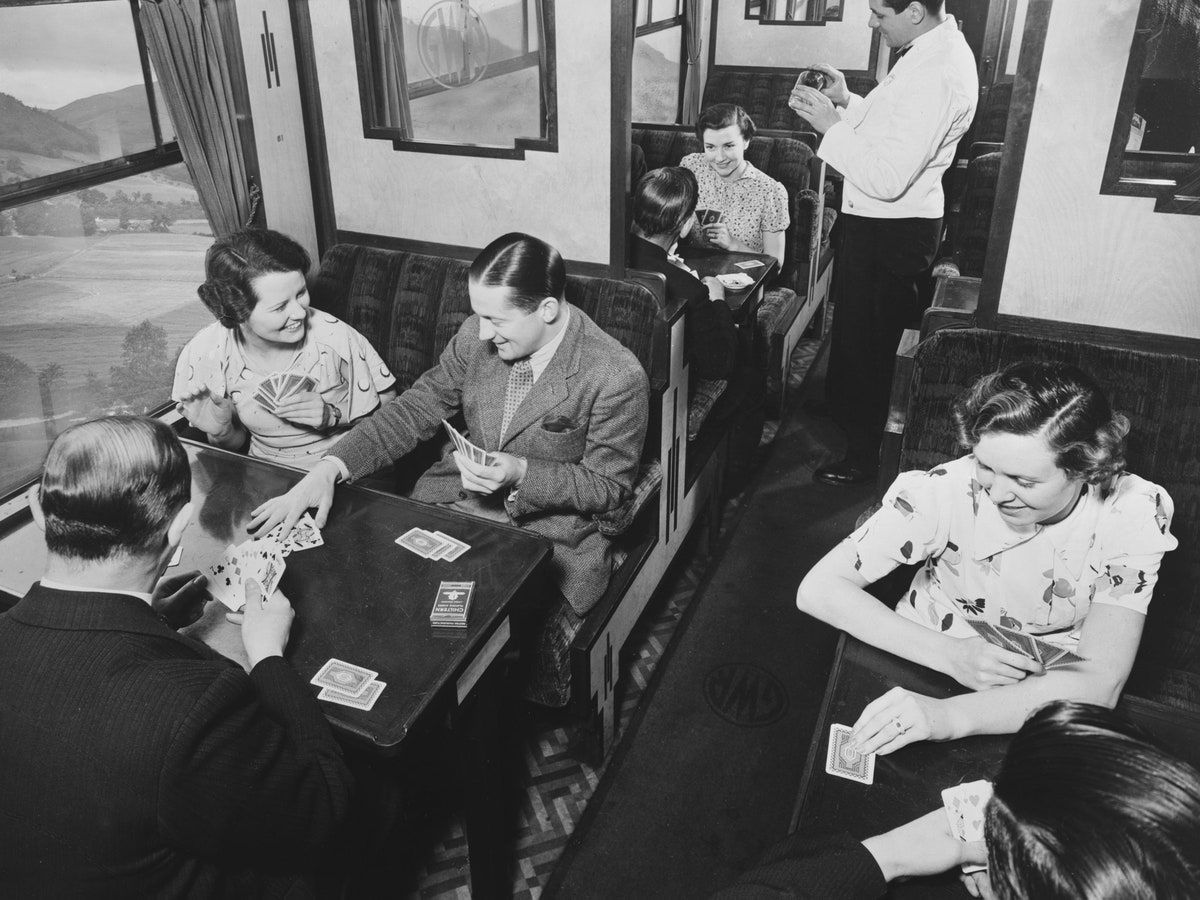
Passengers play cards in a Great Western Railway (GWR) dining car, 1938.

Cleaners at work in the luxurious coach ‘Minerva’ in 1938.
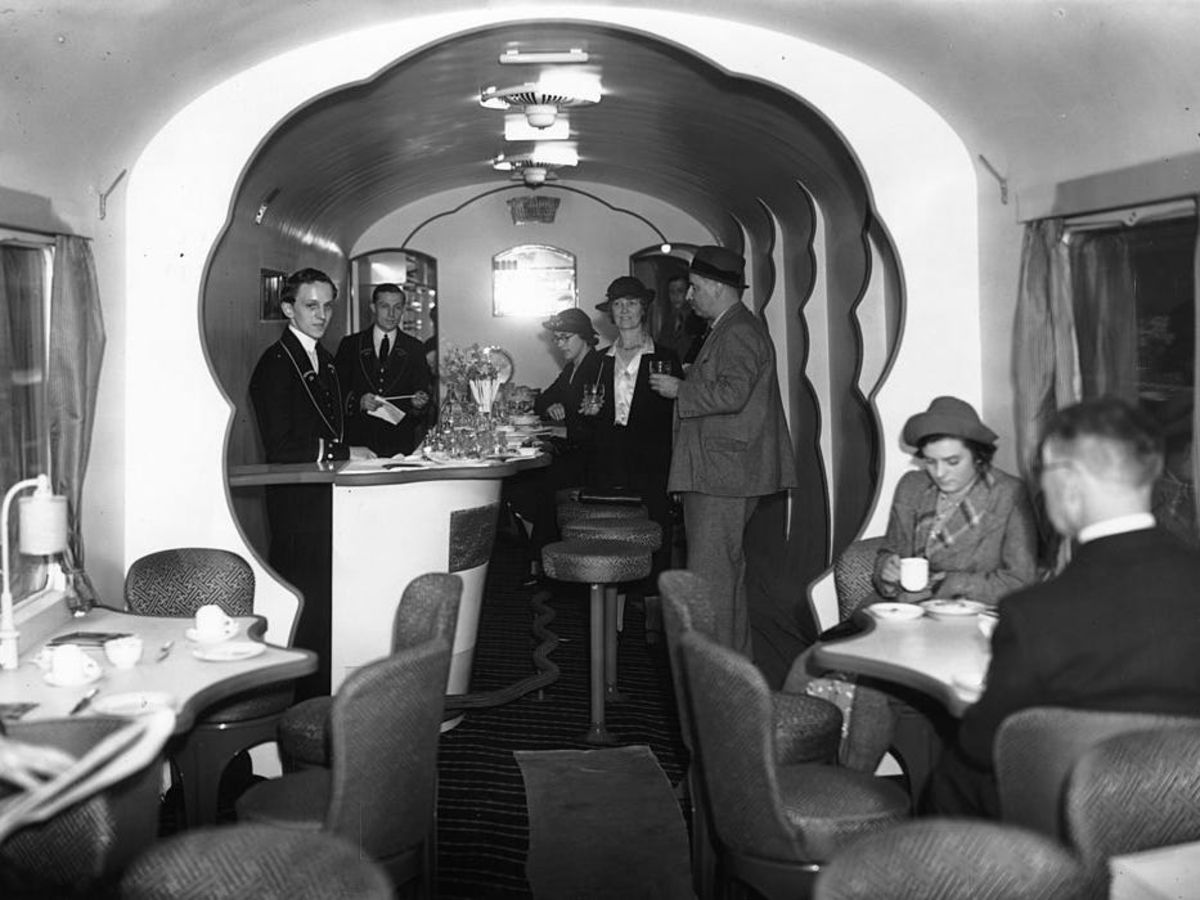
A corridor buffet car built for the new electric main line from London to Bognor Regis, Chichester and Littlehampton districts on show at Waterloo station, London in 1938.
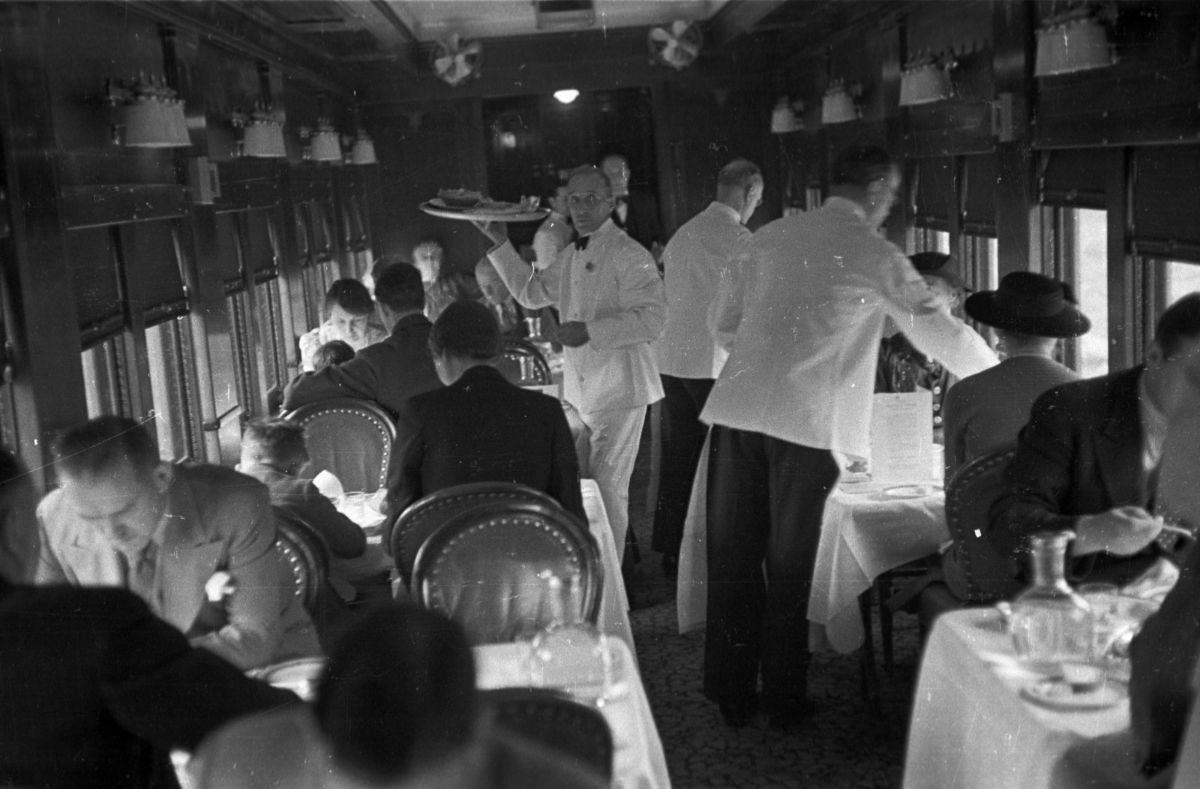
Waiters bringing food to passengers in the dining car of a Canadian Pacific Railway train during a three day journey across the country, 1939.
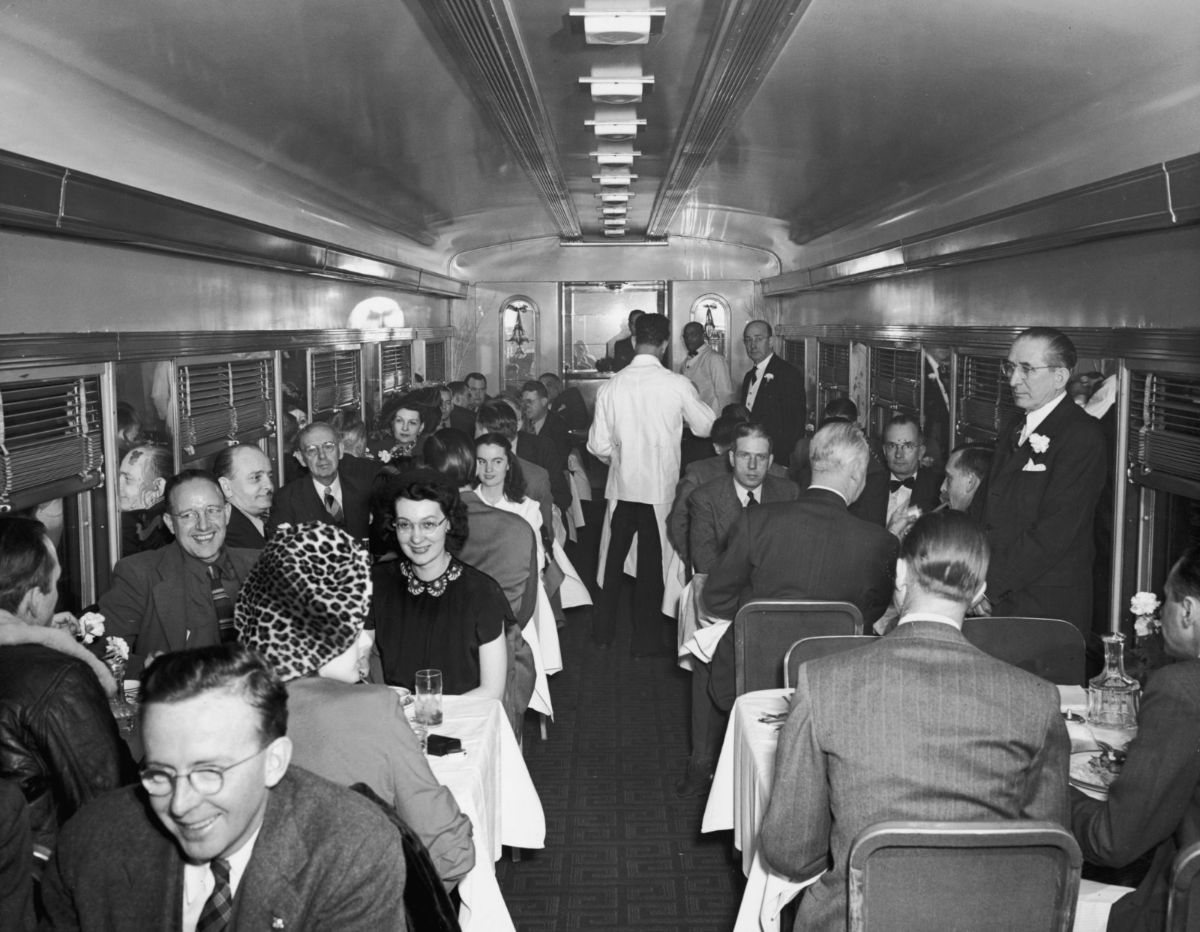
Interior view of a crowded restaurant car, 1940.
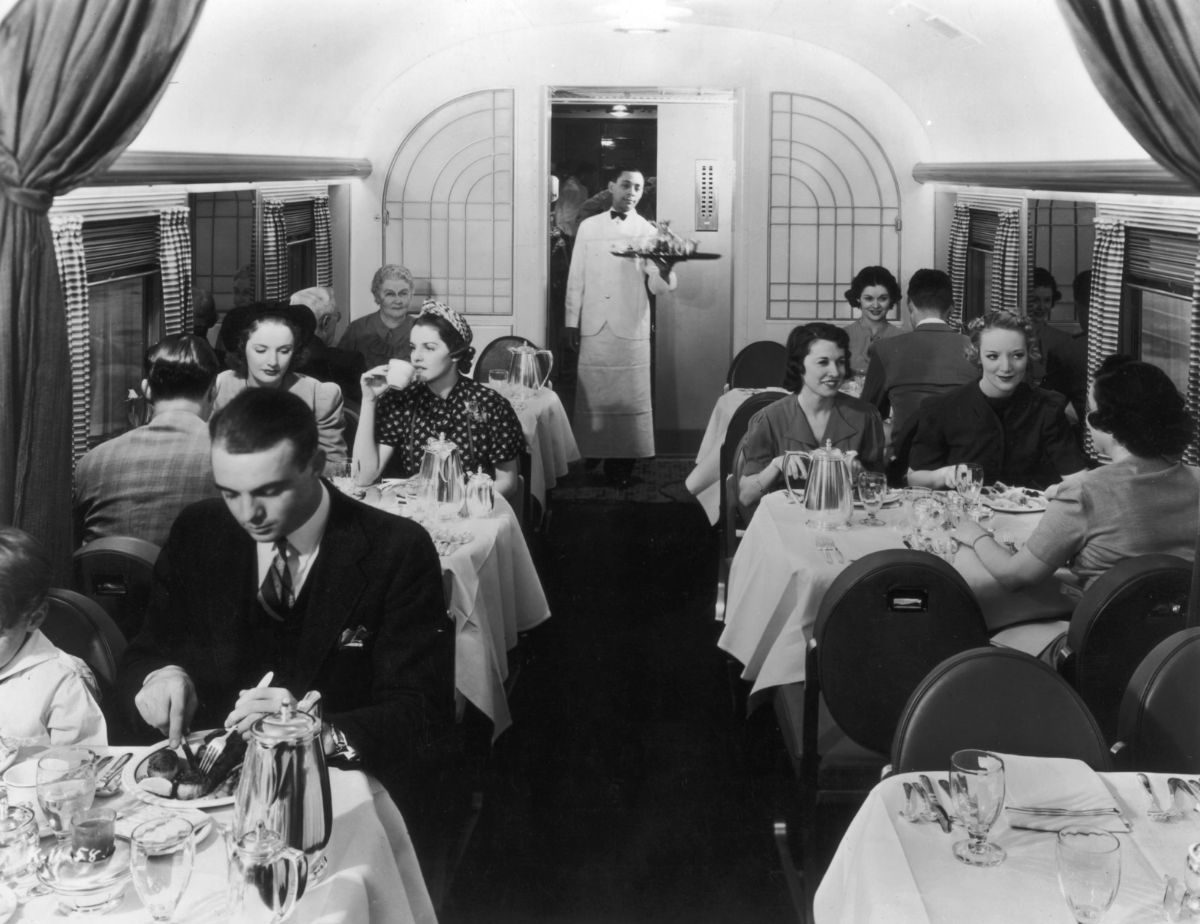
Interior view of a restaurant car, 1945.

Passengers in a BEA Vickers Viking while away the time with a game of cards, 1947.
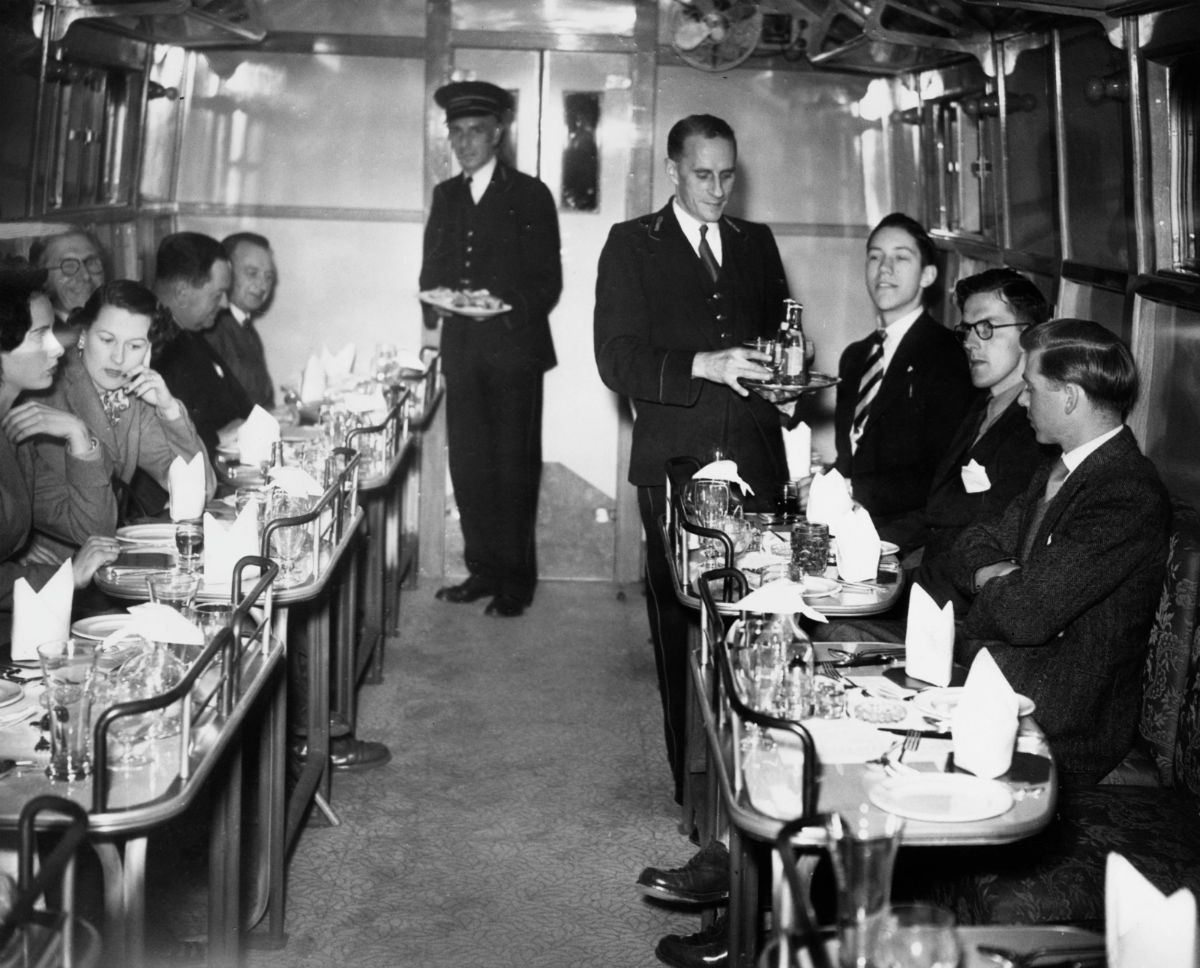
Interior of Jolly Tar, the first of the new British Railway Tavern cars at Waterloo Station, London, May 25, 1949.

A new British Railways restaurant car at Waterloo Station in London in 1949.

Passengers in the dining car on a Rio Grande streamliner train, early 1950s.
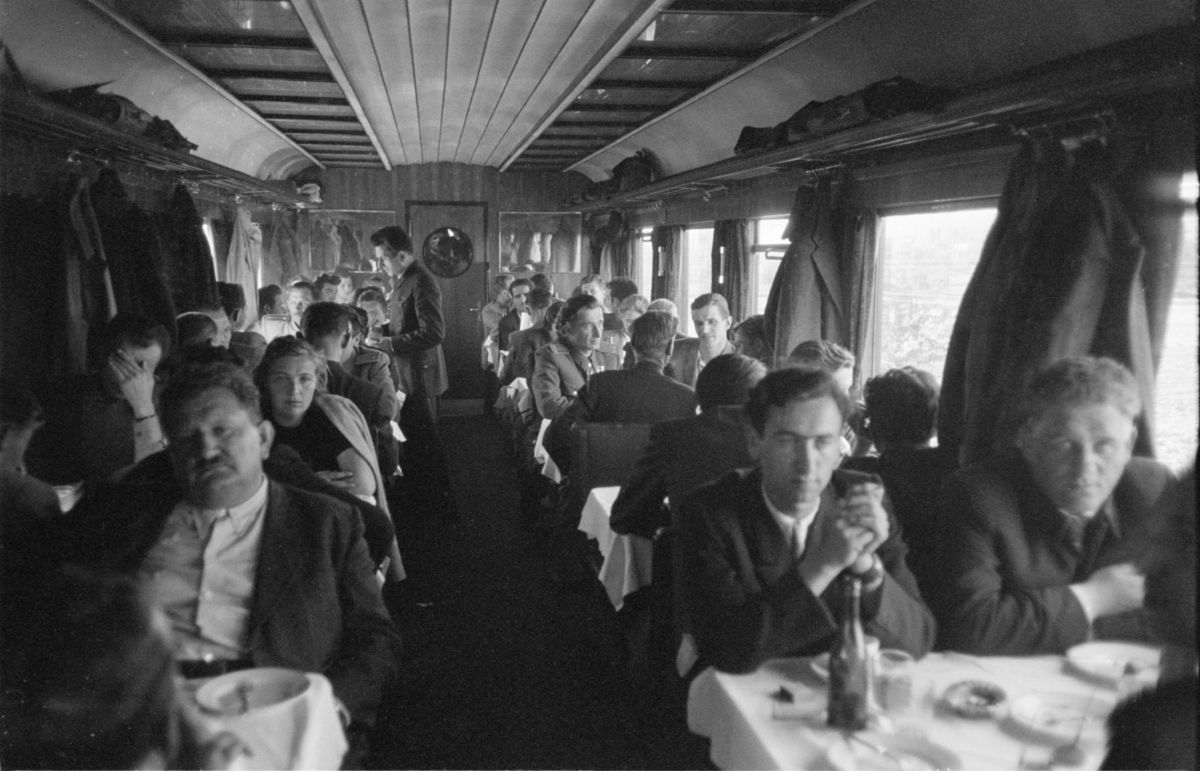
Crowded dining car aboard the Simplon Orient Express train, 1950.
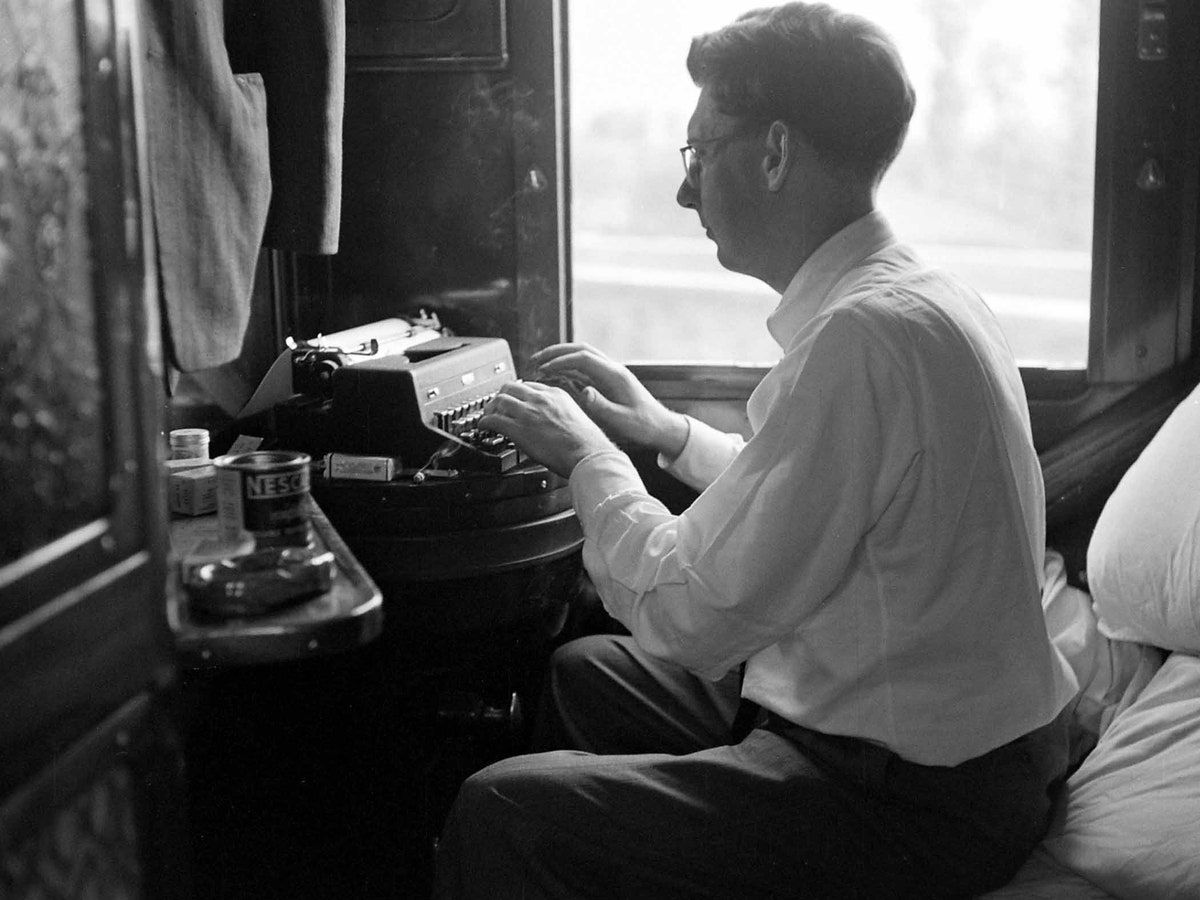
A man uses a typewriter while riding the Venice-Simplon Orient Express, 1950.
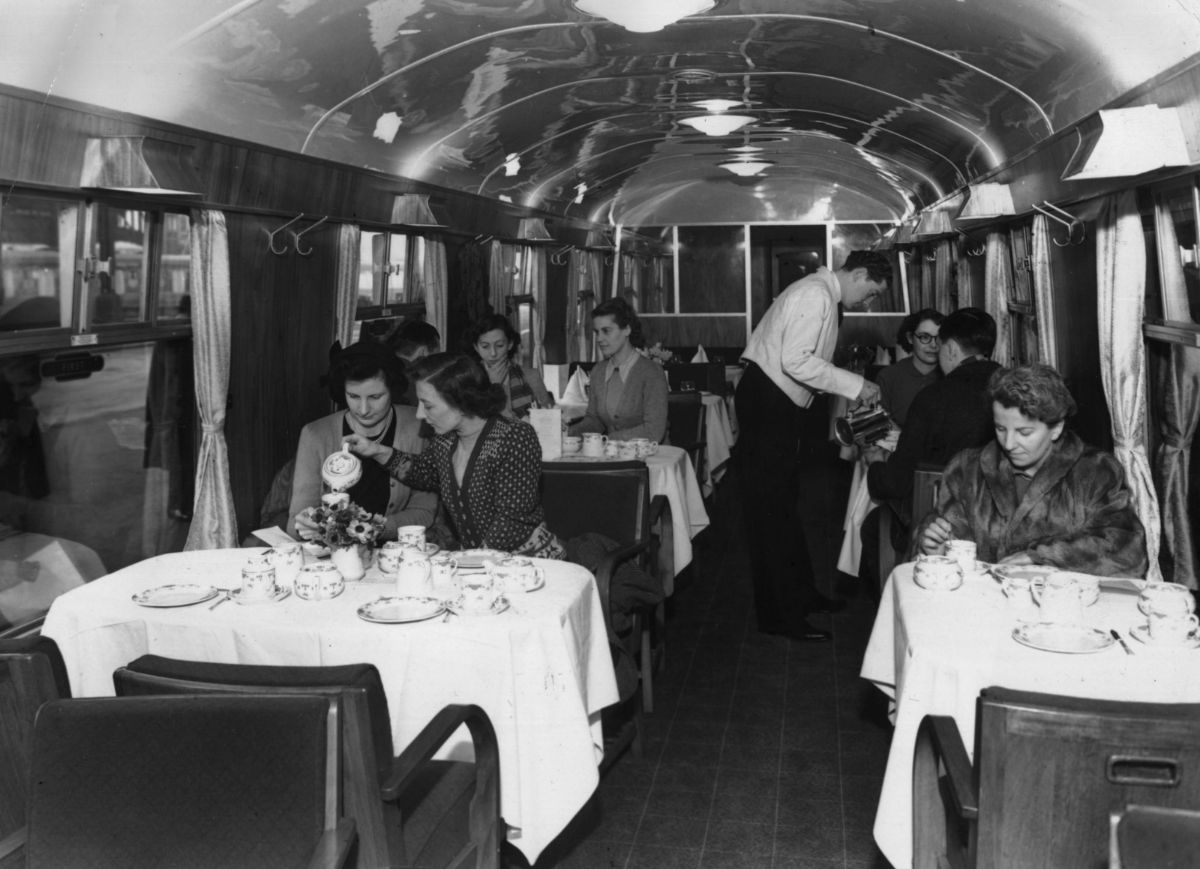
Passengers in a first class dining saloon in 1951.
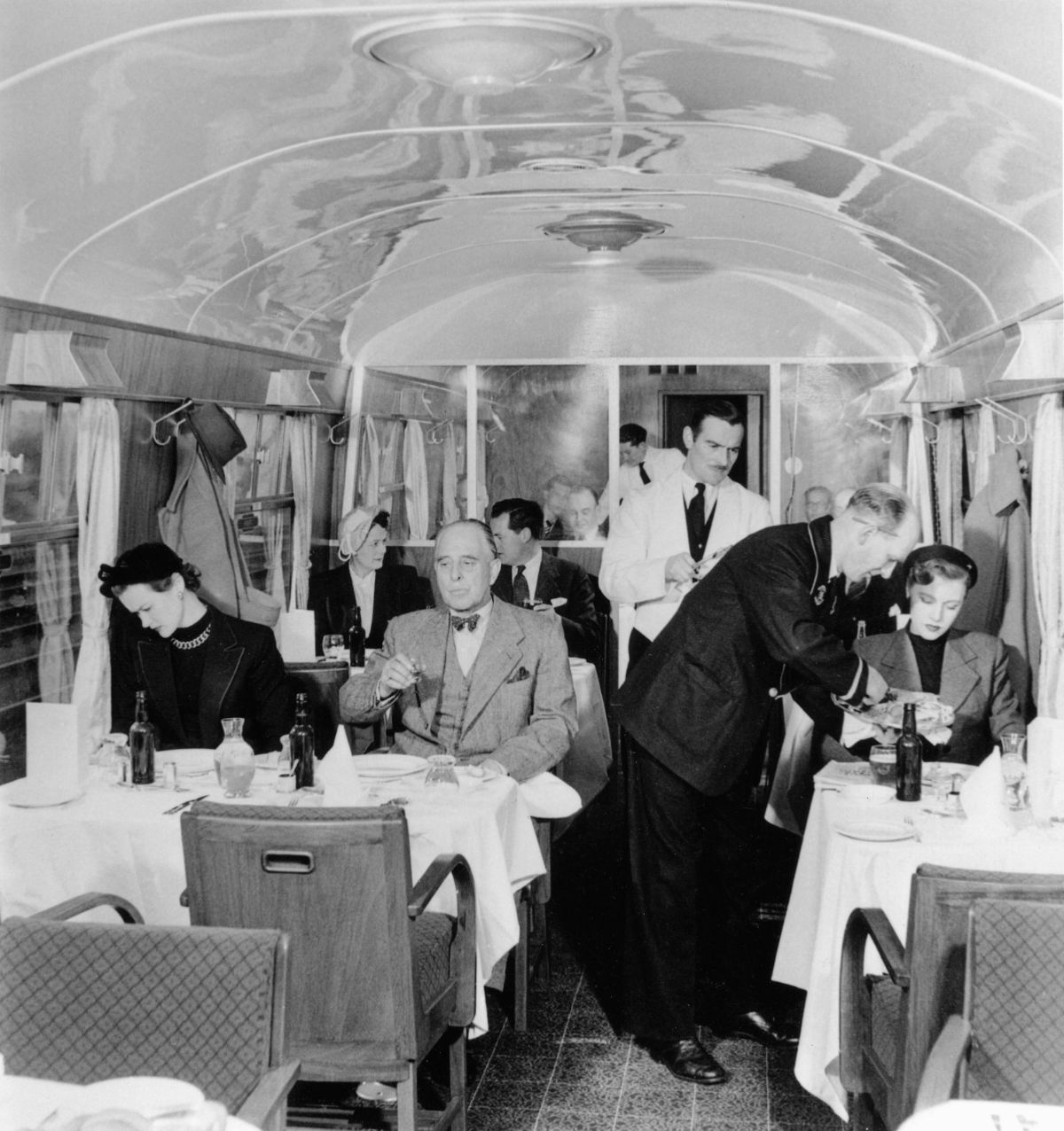
British Rail stewards serve drinks in a first-class dining car, 1951.
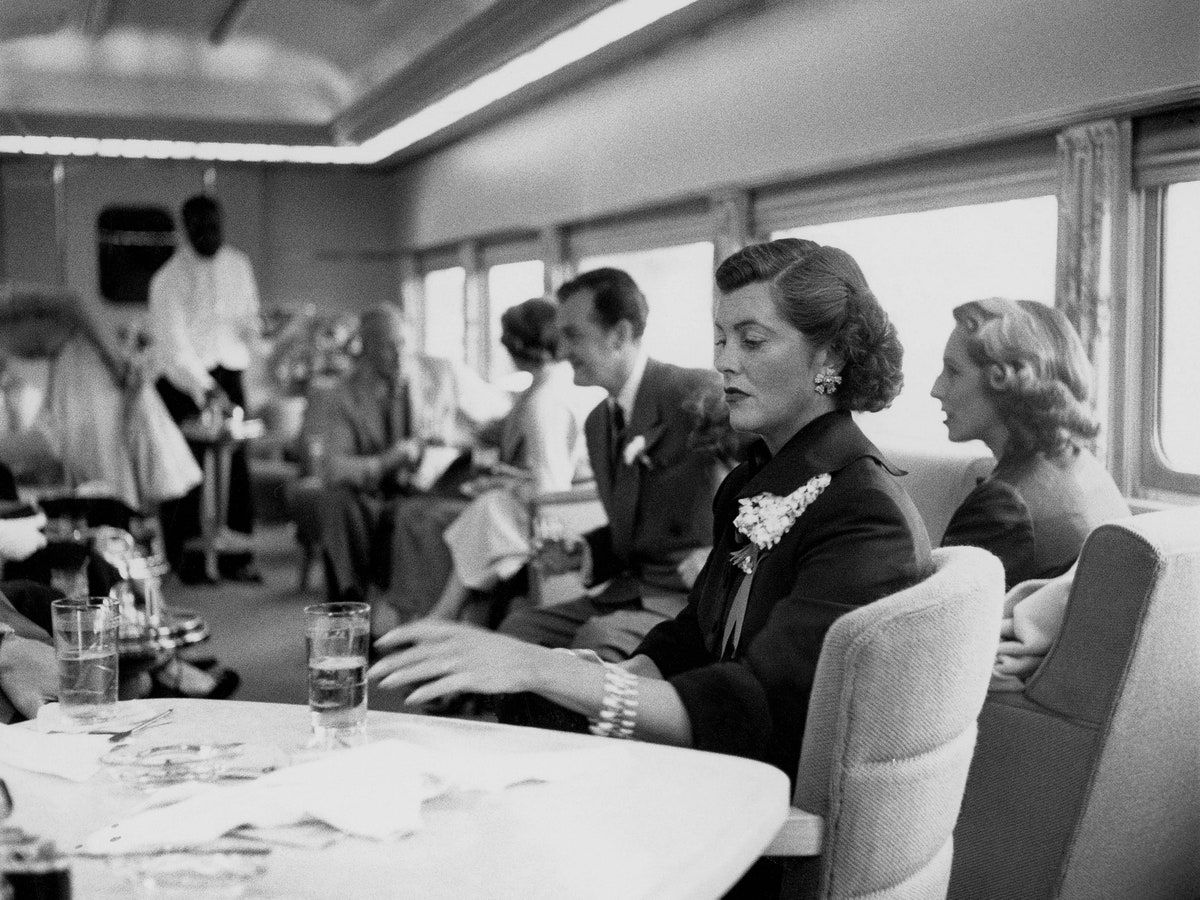
Veronica Balfe (wife of actor Gary Cooper) has a cocktail on the Super Chief railroad, 1951. The train was a favorite of celebrities traveling between Chicago and Los Angeles.
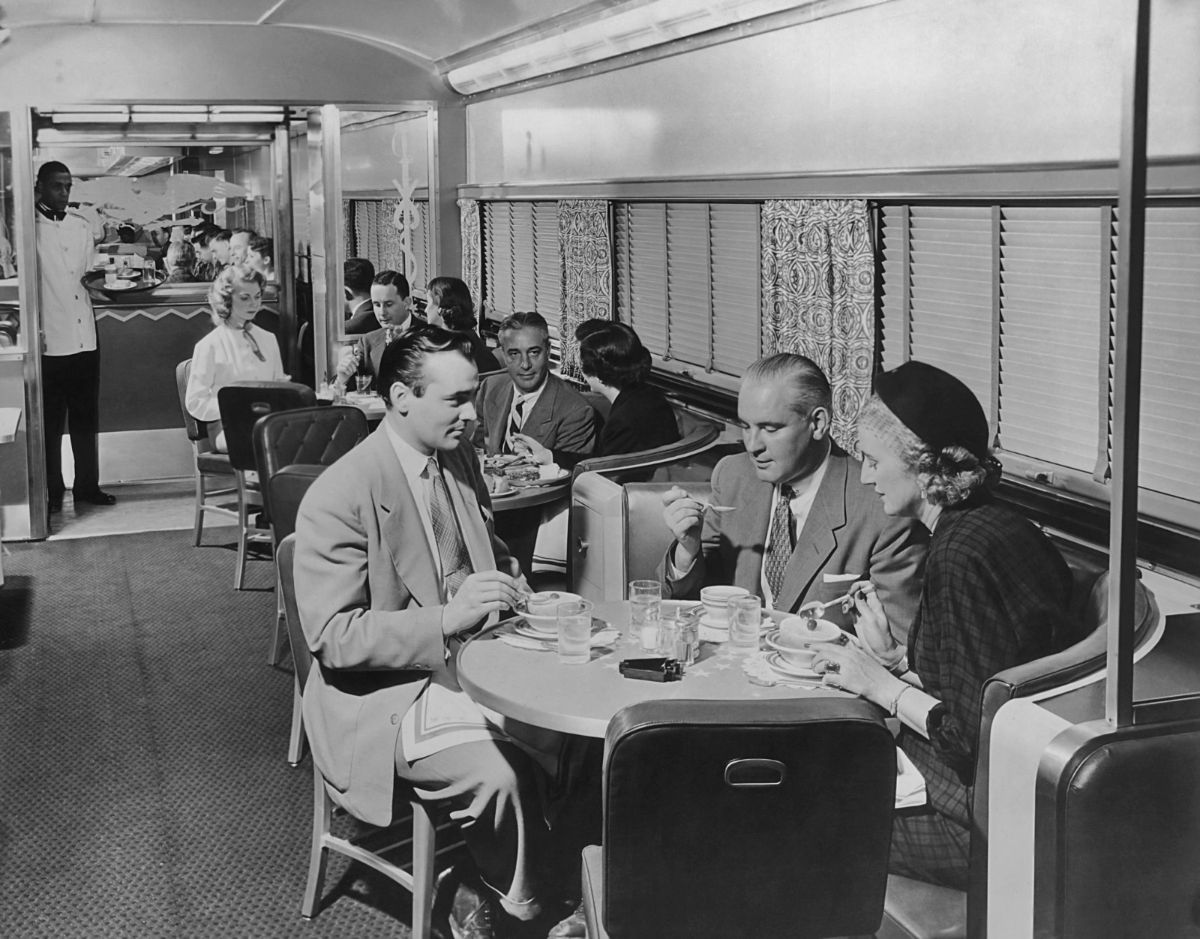
Passengers on the Pennsylvania Railroad restaurant car, 1952.
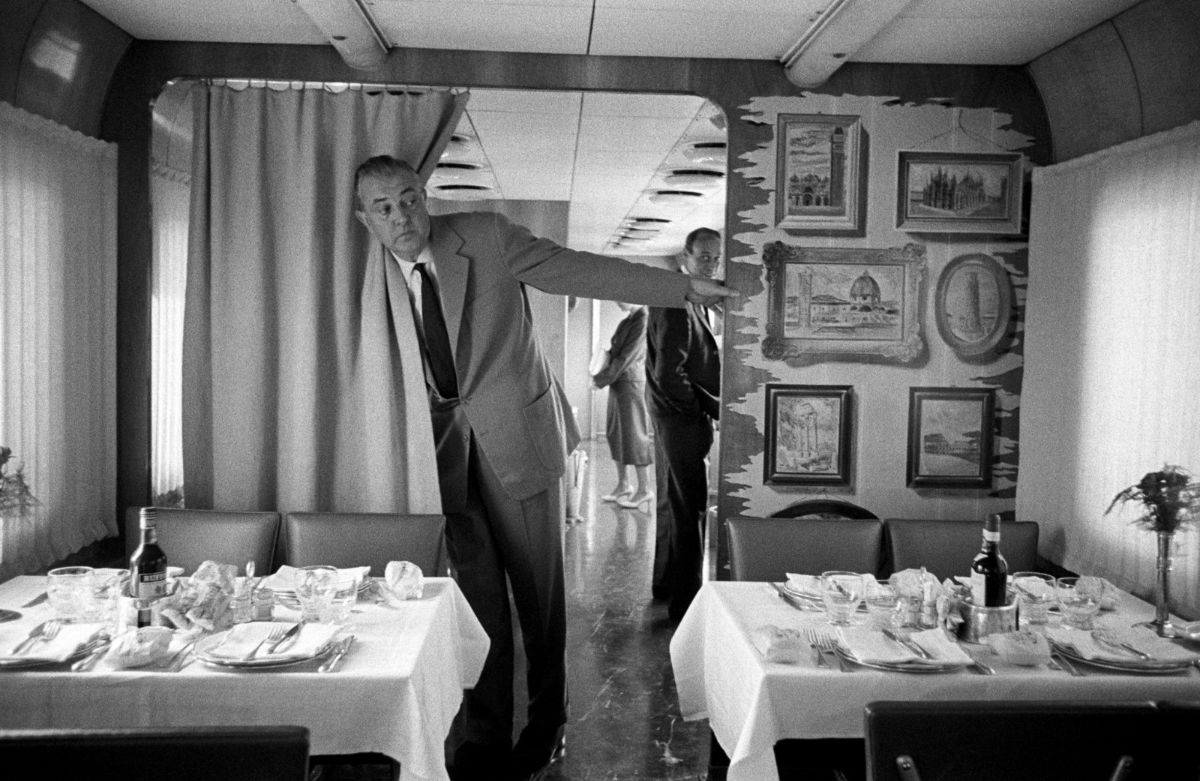
French actor, director and mime Jacques Taty examines the dining car train, September 1958.

A new restaurant car was launched on the Paris-Lille railway in France, 1959.

-1707382314.jpg)
-1705826162.jpg)
